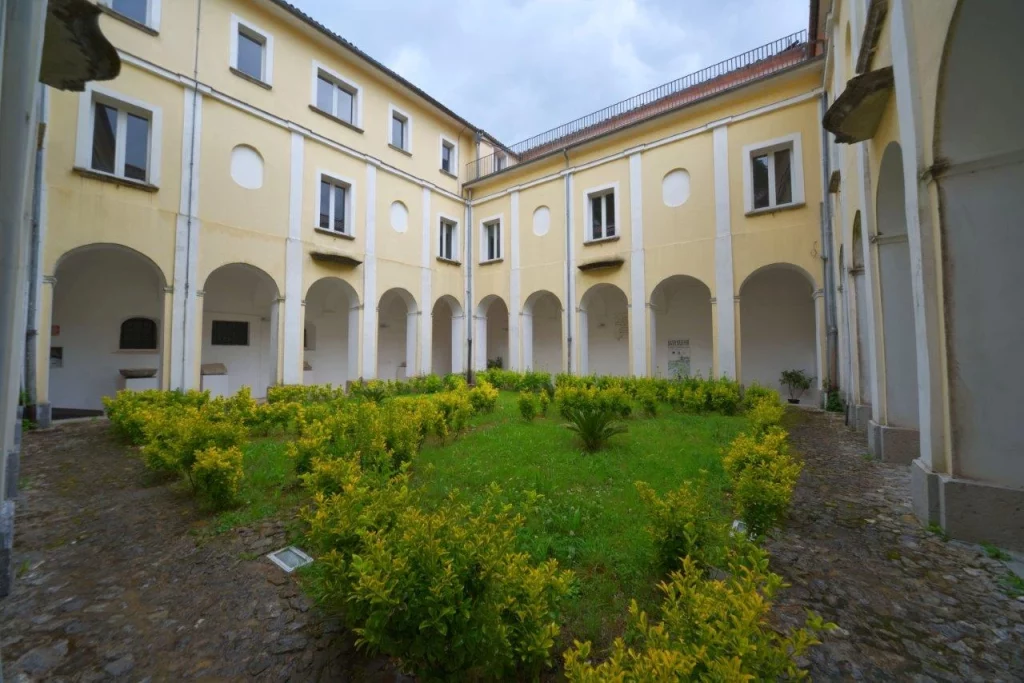Ceclia Conforti
L’obiettivo degli Alleati è liberare l’Europa stringendo a tenaglia il nemico tedesco con una doppia invasione da nord e da sud. E quindi il meridione d’Italia diviene uno snodo cruciale del conflitto e, dopo la liberazione della Sicilia, la sua zona continentale. La Puglia e la Calabria sono agevolmente conquistate dall’8.va armata, ma a Salerno sono concentrati i maggiori sforzi per liberare Napoli e risalire rapidamente verso Roma.
The Allies’ goal was to liberate Europe by tightening the noose around the German enemy with a double invasion from the north and south. As a result, southern Italy became a crucial point in the conflict. After the liberation of Sicily, the continental part of Italy became the focus. Puglia and Calabria were easily conquered by the 8th Army, but the greatest efforts were concentrated in Salerno to liberate Naples and quickly advance toward Rome.


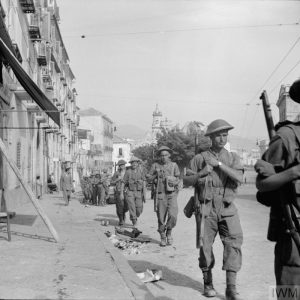
Alla primissima alba del 9 settembre 1943 avviene il massiccio sbarco alleato sulle spiagge salernitane a cui risponde un’accanita controffensiva dell’occupante tedesco.
Lo scenario bellico è ampiamente esteso e comprende l’area tra Agropoli ed Amalfi incentrandosi principalmente sui Comuni di Battipaglia, fondamentale snodo ferroviario, Albanella, Olevano sul Tusciano, Montecorvino ed il suo aeroporto, e lo stesso capoluogo campano.
Il comando dello sbarco sulla costa tirrenica fu affidato al Generale americano Clark, a capo della 5°Armata. Il Generale inglese Montgomery invece era a capo della 8°Armata che conduceva le operazioni di sbarco sulla costa ionica per poi unirsi alle truppe di Clark a Napoli e marciare congiuntamente verso Roma.
A differenza del contemporaneo sbarco alleato a Taranto, che avviene pacificamente e senza alcuna resistenza, lo sbarco a Salerno si rivela una colossale valanga di errori, che per poco, non consentono ai tedeschi di respingere in mare gli anglo-americani.
Le conseguenze internazionali dello sbarco / The international consequences of the landing
At the very first light of dawn on September 9, 1943, the massive Allied landing took place on the beaches of Salerno, to which the German occupiers responded with a fierce counteroffensive.
The battlefield extended over a wide area, spanning from Agropoli to Amalfi, with a primary focus on the towns of Battipaglia, a key railway hub, Albanella, Olevano sul Tusciano, Montecorvino Pugliano and its airport, as well as the city of Salerno itself.
The command of the landing on the Tyrrhenian coast was entrusted to American General Clark, head of the 5th Army. British General Montgomery, on the other hand, led the 8th Army, which carried out landing operations on the Ionian coast before joining Clark’s troops in Naples and marching jointly toward Rome.
Unlike the simultaneous Allied landing in Taranto, which occurred peacefully and without any resistance, the landing in Salerno turned into a colossal avalanche of mistakes that nearly allowed the Germans to push the Anglo-Americans back into the sea.
A VIDEO FROM BRITISH PATHÉ – Full title reads: “SALERNO”, FILM ID:1091.04
Lo scenario bellico è ampiamente esteso e comprende l’area tra Agropoli ed Amalfi incentrandosi principalmente sui Comuni di Battipaglia, fondamentale snodo ferroviario, Albanella, Olevano sul Tusciano, Montecorvino ed il suo aeroporto, e lo stesso capoluogo campano.
The battlefield extended over a wide area, spanning from Agropoli to Amalfi, with a primary focus on the towns of Battipaglia, a key railway hub, Albanella, Olevano sul Tusciano, Montecorvino Pugliano and its airport, as well as the city of Salerno itself.
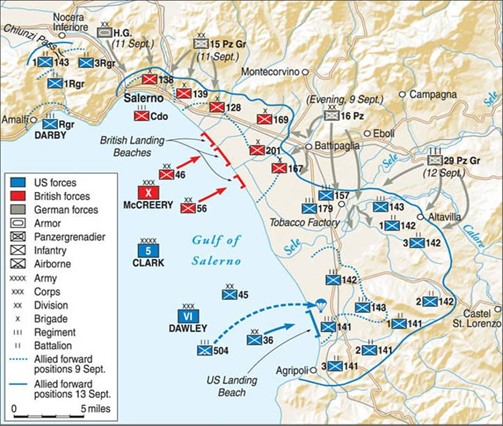
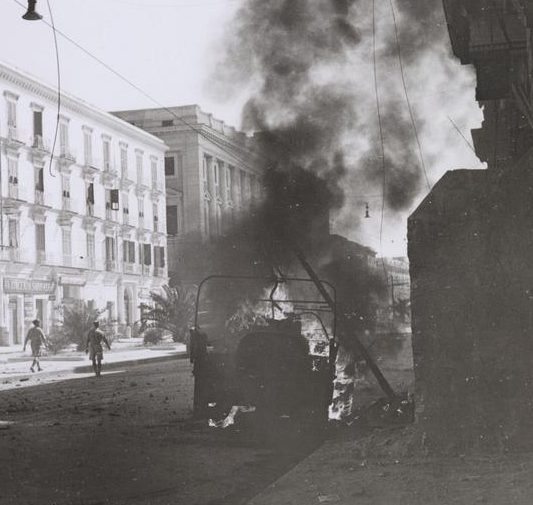
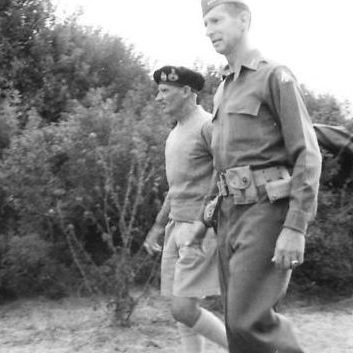
Il comando dello sbarco sulla costa tirrenica fu affidato al Generale americano Clark, a capo della 5°Armata. Il Generale inglese Montgomery invece era a capo della 8°Armata che conduceva le operazioni di sbarco sulla costa ionica per poi unirsi alle truppe di Clark a Napoli e marciare congiuntamente verso Roma.
The command of the landing on the Tyrrhenian coast was entrusted to American General Clark, head of the 5th Army. British General Montgomery, on the other hand, led the 8th Army, which carried out landing operations on the Ionian coast before joining Clark’s troops in Naples and marching jointly toward Rome.
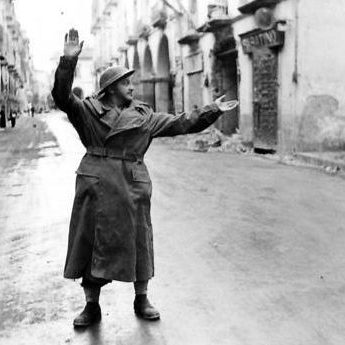
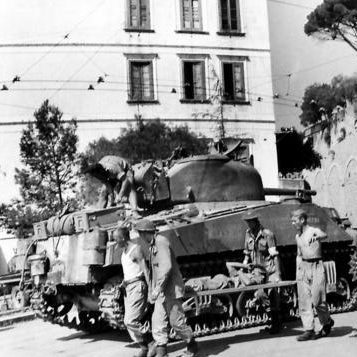
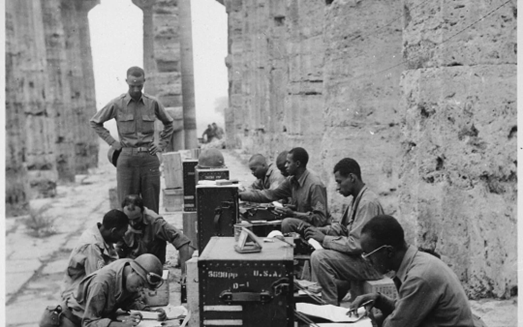
A differenza del contemporaneo sbarco alleato a Taranto, che avviene pacificamente e senza alcuna resistenza, lo sbarco a Salerno si rivela una colossale valanga di errori, che per poco, non consentono ai tedeschi di respingere in mare gli anglo-americani.
Unlike the simultaneous Allied landing in Taranto, which occurred peacefully and without any resistance, the landing in Salerno turned into a colossal avalanche of mistakes that nearly allowed the Germans to push the Anglo-Americans back into the sea.
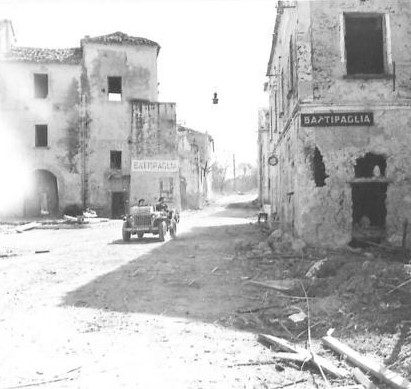
La città, strategico obiettivo bellico, fu gravemente colpita nello sbarco e quasi totalmente distrutta dai bombardamenti del 21 giugno 1943 che causarono 117 vittime.
Norman Lewis, ufficiale inglese del Security Field, definì Battipaglia nel libro Naples ’44 “La Guernica Italiana” dopo averne assistito alla totale distruzione.
I bombardamenti alleati distrussero il municipio e gran parte dell’area circostante. Per questo non volontario ruolo Battipaglia è stata insignita della medaglia d’argento al valore civile.
The city, a strategic military target, was heavily affected during the landing and almost completely destroyed by the bombings of June 21, 1943, which caused 117 casualties.
Norman Lewis, a British officer in the Security Field, described Battipaglia as “The Italian Guernica” in his book Naples ’44 after witnessing its complete destruction.
The Allied bombings destroyed the town hall and much of the surrounding area. For this involuntary role, Battipaglia was awarded the Silver Medal for Civil Valor.
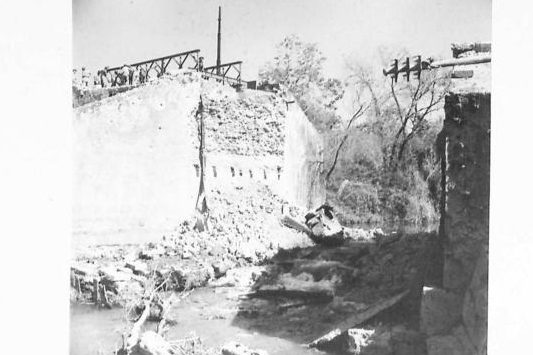
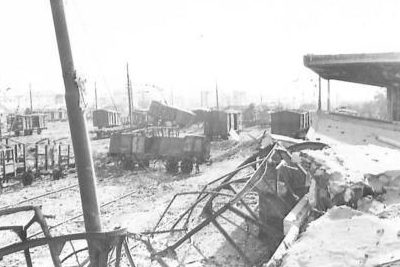
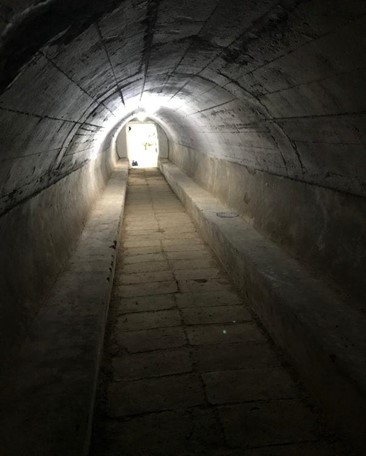
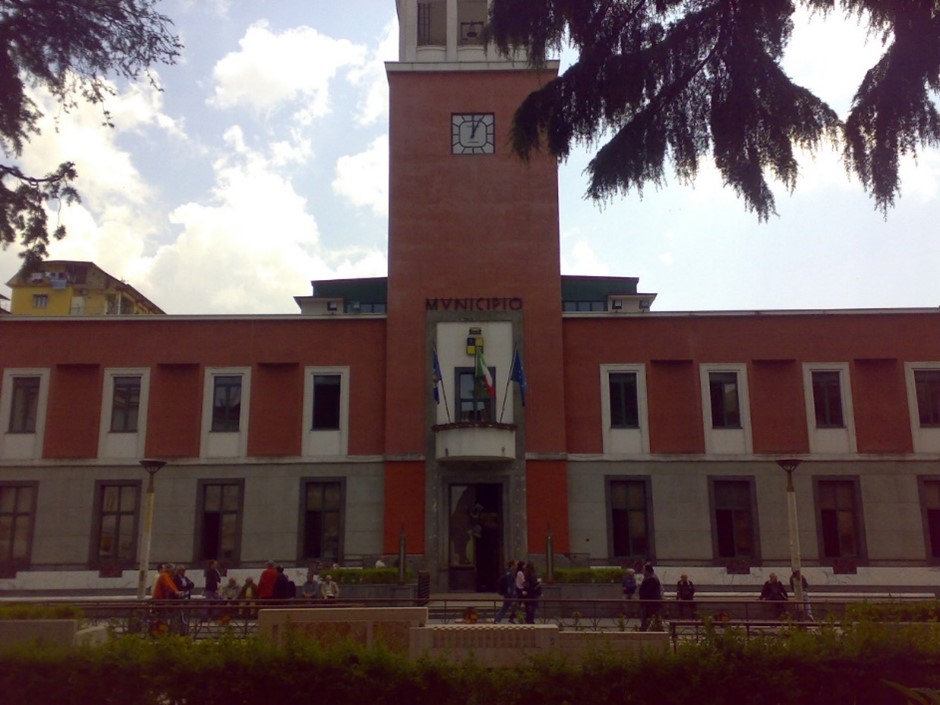
Il 21 giugno 1943, anche Salerno fu colpita da un devastante bombardamento aereo da parte delle forze Alleate. Questo attacco faceva parte delle operazioni preliminari allo sbarco, volto a colpire obiettivi strategici come infrastrutture, ferrovie, porti e centri industriali utili per lo sforzo bellico tedesco.
On June 21, 1943, also Salerno was struck by a devastating aerial bombing by Allied forces. This attack was part of the preliminary operations for the landing, aimed at targeting strategic objectives such as infrastructure, railways, ports, and industrial centers essential to the German war effort.
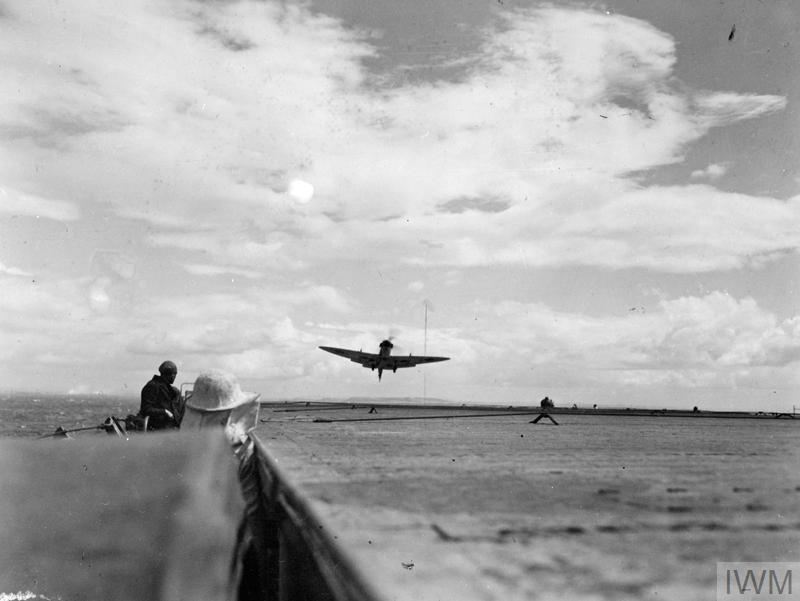
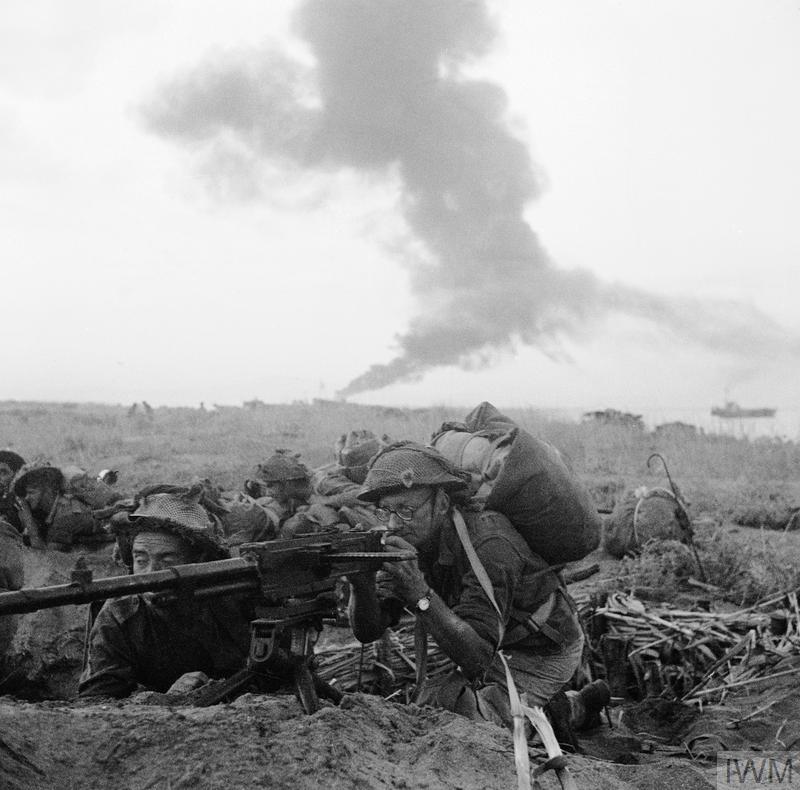
Durante la Seconda Guerra Mondiale, Salerno fu capitale d’Italia e il Salone fu sede del governo, ospitando incontri diplomatici e militari delle forze alleate durante lo sbarco.
During World War II, Salerno was the capital of Italy, and the Salone dei Marmi served as the seat of the government, hosting diplomatic and military meetings of the Allied forces during the landing.
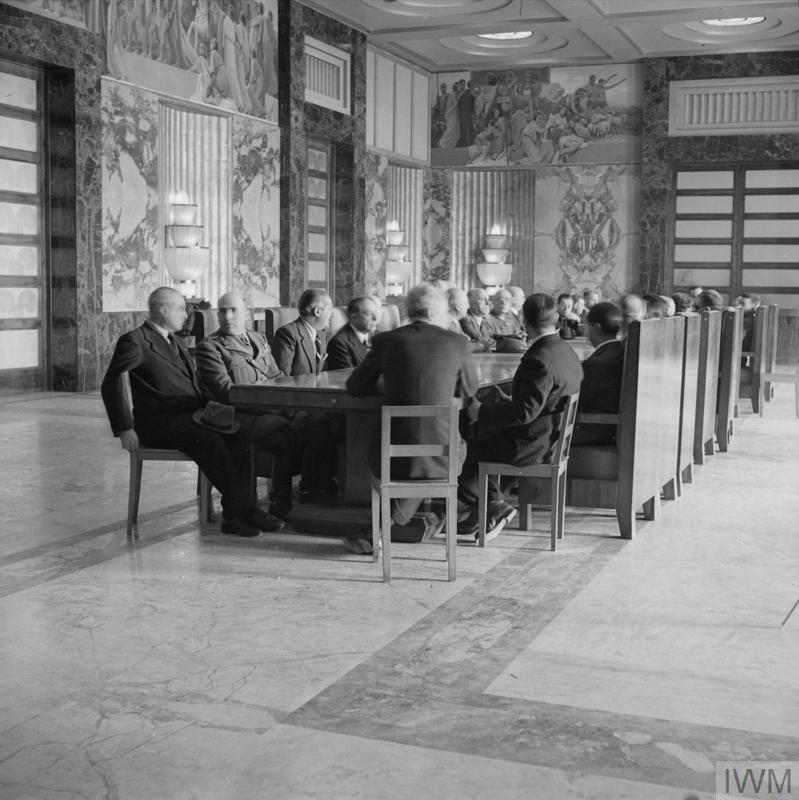
Un monumento dell’architettura razionalista degli anni ’30, con interni decorati con marmi policromi e bassorilievi, ospita ora eventi culturali, civici e istituzionali.
A monument of 1930s rationalist architecture, with interiors decorated with polychrome marbles and bas-reliefs, it now hosts cultural, civic, and institutional events.
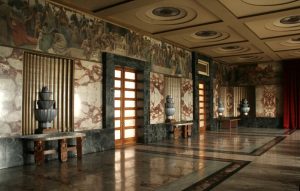
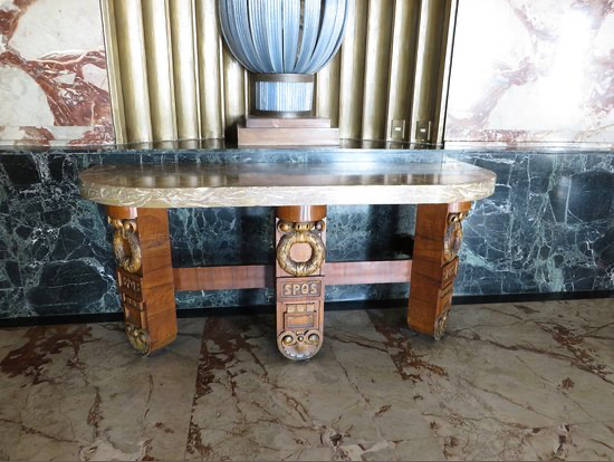
Nel 2012 è stato inaugurato il Museo dello Sbarco e Salerno Capitale dedicato all’Operazione Avalanche, che racconta, con cimeli e oggetti rari, il contributo degli Alleati e della Resistenza italiana alla liberazione del Mezzogiorno.
In 2012, the Museum of the Landing and Salerno Capital was inaugurated, dedicated to Operation Avalanche, showcasing with relics and rare objects the contribution of the Allies and the Italian Resistance to the liberation of Southern Italy.
Il 26 luglio, formazioni di aerei alleati compirono la prima incursione su Eboli, colpendo con bombe l’area del mercato coperto. L’attacco causò tre vittime: un civile e due soldati.
Il 4 agosto, invece, gli Alleati tornarono a bombardare: le esplosioni colpirono zone di rifugio situate fuori dalle mura cittadine, provocando la morte di sette frati e un bambino. La maggior parte dei cittadini si era già rifugiata fuori città
Eboli subì gravi distruzioni, con il 74% delle abitazioni rese inagibili e vittime tra civili e religiosi.
On July 26, Allied aircraft carried out the first air raid on Eboli, bombing the area around the covered market. The attack caused three deaths: one civilian and two soldiers.
On August 4, the Allies returned to bomb the town: the explosions hit shelter areas located outside the city walls, killing seven friars and a child. By that time, most of the townspeople had already taken refuge outside the city.
Eboli suffered heavy destruction, with 74% of the buildings rendered uninhabitable and casualties among both civilians and clergy.
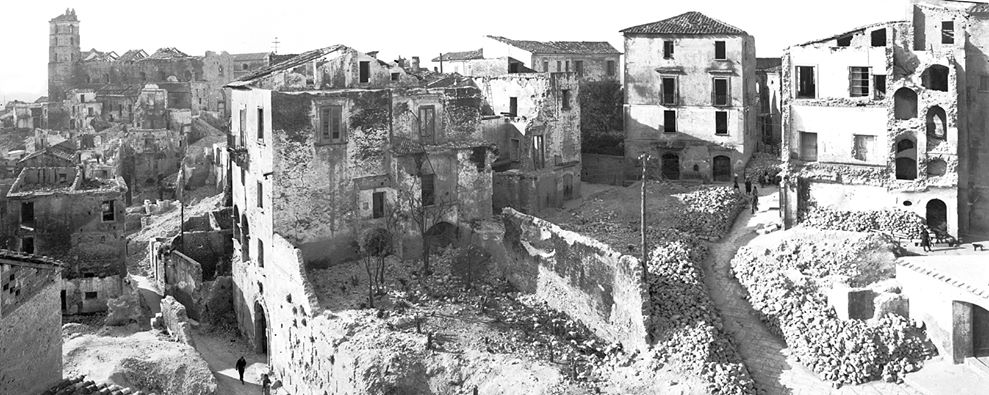
.
Istituto Luce – La V armata occupa le Città di Eboli e Battipaglia. Video Girato il 24/09/1943 dopo 15 dall’inizio dell’Operazione Avalanche, Lo sbarco degli alleati nel Golfo di Saleno
Molte immagini di quegli anni sono conservate nell’EBAD Eboli Archivio Digitale http://www.eboliarchiviodigitale.it. Nel centro storico, devastato dai bombardamenti, sorge il MOA, Museo dell’Operazione Avalanche. Inaugurato nel 2012, espone reperti, armi e uniformi per ricostruire gli scenari bellici.
Many images from those years are preserved in the EBAD Eboli Digital Archive. In the historic center, devastated by bombings, stands the MOA, Museum of Operation Avalanche. Inaugurated in 2012, it displays artifacts, weapons, and uniforms to reconstruct wartime scenarios.
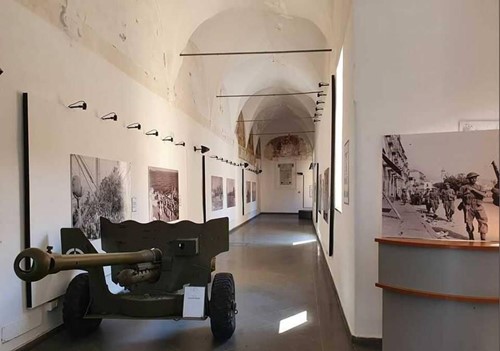
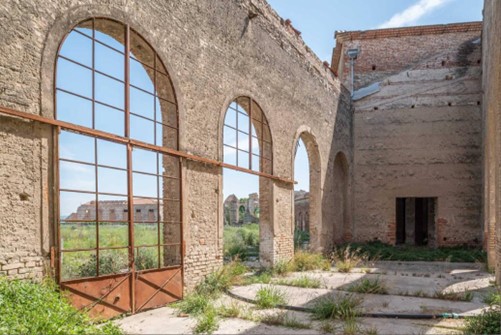
La Fabbrica di Tabacco SAIM, teatro di violenti scontri tra tedeschi e americani, conserva ancora tracce del conflitto e della totale distruzione. I tedeschi utilizzarono i tabacchifici per rifugio e agguati.
The SAIM Tobacco Factory, the site of violent clashes between Germans and Americans, still bears traces of the conflict and total destruction. The Germans used the tobacco factories as shelters and ambush points.
The medieval Borgo Antico di Valle, located at the foot of Monte Castello, served as a strategic observation point during the Allied landing of 1943.
Il Borgo Antico di Valle, situato alle pendici del Monte Castello, è un complesso medievale che fu punto di osservazione privilegiato durante lo sbarco alleato del 1943.
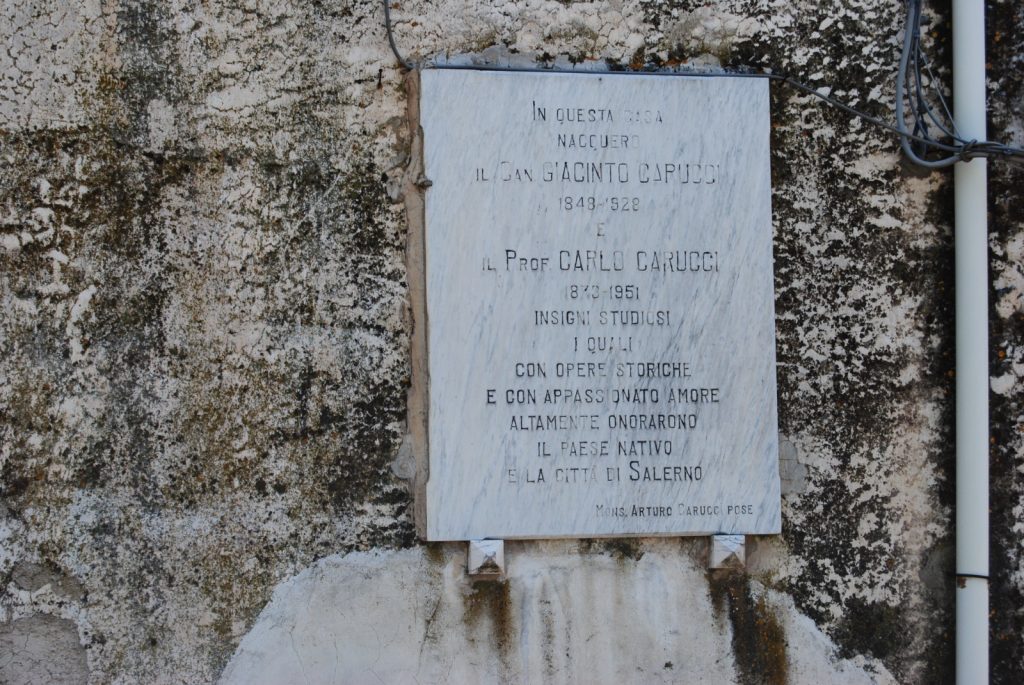
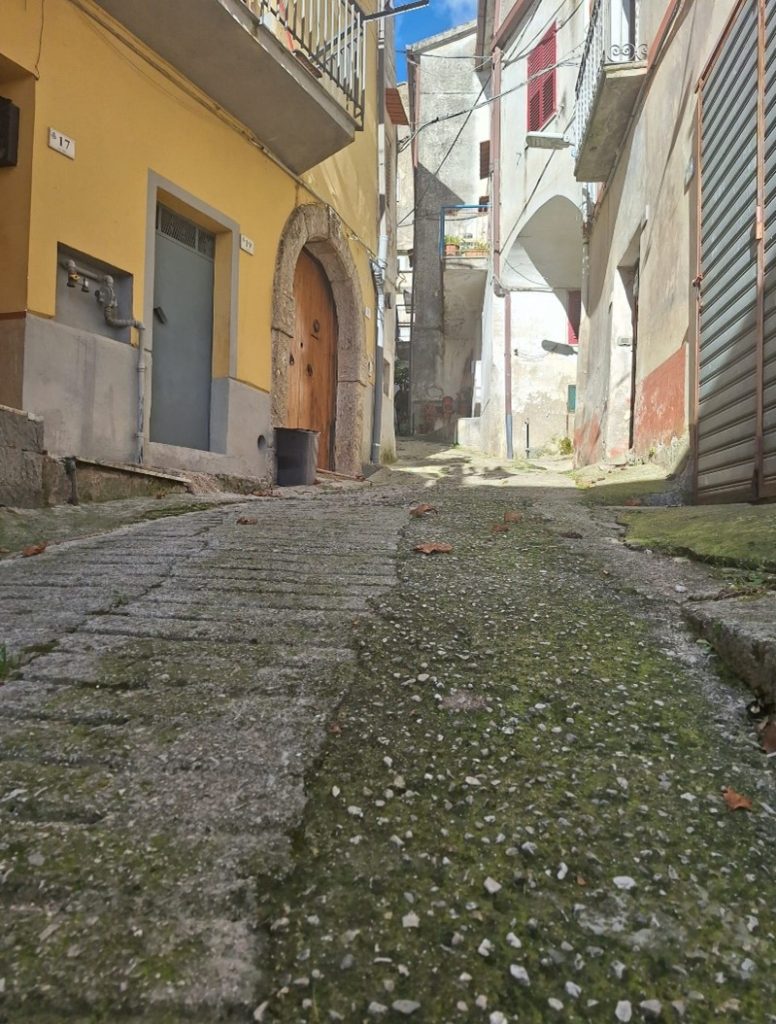
La Borgata Valle e gli altri borghi limitrofi fungevano da rifugio non solo per i soldati italiani che, se catturati, rischiavano la deportazione per diserzione, ma anche per i soldati alleati liberatisi dalla prigionia tedesca.
Il Borgo ha dato i natali allo storico Carlo Carucci autore del diario “La battaglia di Salerno vista dalla borgata Valle”, in cui ha descritto, osservandolo dal terrazzo di casa, lo sbarco sulle coste salernitane e le tre successive settimane di dura battaglia. Infatti, il Borgo offre una panoramica suggestiva su tutto il territorio interessato dall’operazione.
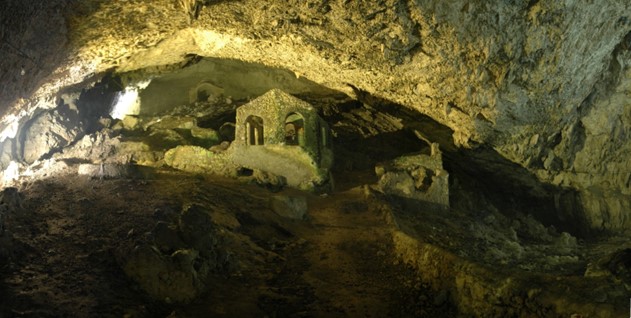
The village is the birthplace of the historian Carlo Carucci author of the diary The Battle of Salerno Seen from the Hamlet of Valle, in which he described, from the terrace of his home, the landing on the Salerno coast and the three following weeks of intense fighting. Indeed, the village offers a stunning panoramic view of the entire area involved in the operation.
The Hamlet of Valle and the surrounding villages served as a refuge not only for Italian soldiers who, if captured, risked deportation for desertion, but also for Allied soldiers who had escaped German captivity.
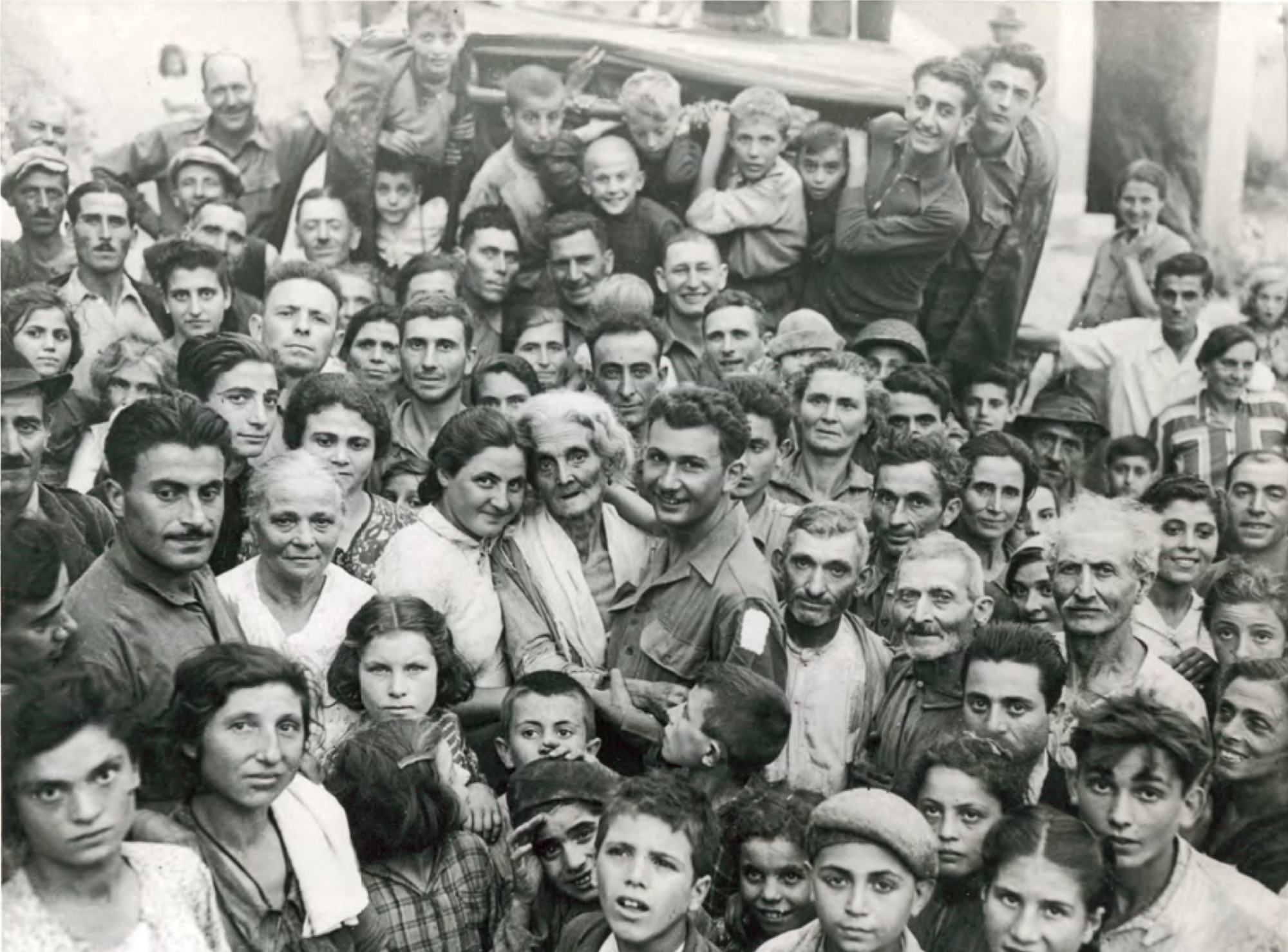
Questa foto fu scattata nel 1943 e cattura l’abbraccio degli abitanti con il soldato Thomas Pastorino, figlio di emigrati da Olivano negli USA, mentre abbraccia la nonna una cugina altri parenti e compaesani. Fu scattata da un fotoreporter americano in discesa da Acerno. La foto divenne “virale” negli Stati Uniti, utilizzata per evidenziare il caloroso benvenuto riservato ai soldati dalla popolazione locale.
(National Archives and Record Administration II, College Park, Maryland, Record Group 208, Office of War Information Allies and Axis 1943-1945, AA Allies and Axis photog., box 48, folder G).
this photo was taken in 1943 and captures the embrace of the residents with soldier Thomas Pastorino, the son of Olivano emigrants in the USA, as he hugs his granfdmother, family and all the townsfolk. It was taken by an American photojournalist coming down from Acerno. The photo went “viral” in the USA as it was used to highlight the warm welcome extended to soldiers by the local population.
(National Archives and Record Administration II, College Park, Maryland, Record Group 208, Office of War Information Allies and Axis 1943-1945, AA Allies and Axis photog., box 48, folder G).
Leggi anche Le Grotte di San Michele a Olevano, un rifugio sicuro nell’estate del 1943.
Please read San Michele Graves, a safe haven in the summer of 1943
Il Comune di Montecorvino Pugliano venne istituito ufficialmente il 25 gennaio 1820, con il Regio Decreto n. 1876, che sancì la divisione dell’antica “Universitas di Montecorvino” in due entità separate: Montecorvino Pugliano (parte occidentale) e Montecorvino Rovella (parte orientale). Nel 1943 come tutta la provincia di Salerno fu teatro di aspri scontri.
The Municipality of Montecorvino Pugliano was officially established on January 25, 1820, by Royal Decree No. 1876, which sanctioned the division of the former “Universitas of Montecorvino” into two separate entities: Montecorvino Pugliano (the western part) and Montecorvino Rovella (the eastern part).As with the entire Province of Salerno, the area was the setting for intense combat.
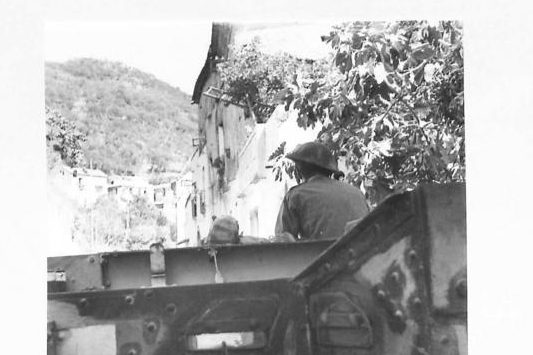
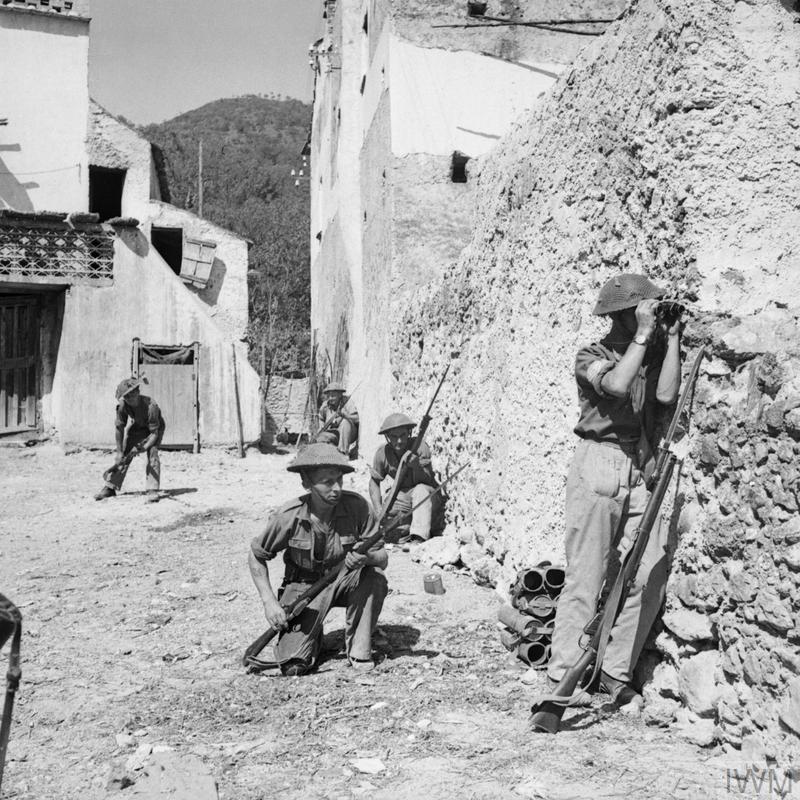
il Salerno War Cemetery, situato a Montecorvino Pugliano lungo la SS18 tra Salerno e Battipaglia, è un cimitero militare gestito dalla Commonwealth War Graves Commission.
The Salerno War Cemetery, located in Montecorvino Pugliano along the SS18 between Salerno and Battipaglia, is a military cemetery managed by the Commonwealth War Graves Commission.
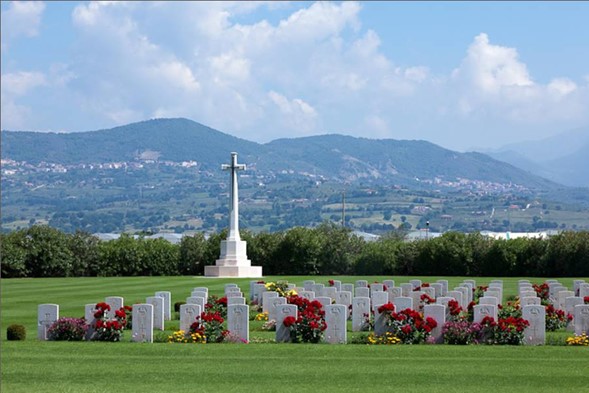

Nel cimitero hanno trovato sepoltura 1.851 militari di nazionalità sia britannica e di paesi aderenti al Commonwealth. Di essi, 109 non furono identificati. Ivi sono presenti anche una tomba di un soldato russo, due tombe non di guerra e un memoriale dedicato ad un marinaio indiano, caduto durrante la prima guerra mondiale.
La cerimonia svoltasi presso il Cimitero in presenza dell’ambasciatore britannico, i rappresentanti di Australia, Polonia, NATO e i sindaci dei comuni della provincia.
In the cemetery, 1,851 soldiers of British nationality and from Commonwealth countries are buried. Of them, 109 were not identified. There is also the grave of a Russian soldier, two non-war graves, and a memorial dedicated to an Indian sailor who fell during World War I.
The ceremony held at the cemetery was attended by the British ambassador, representatives from Australia, Poland, NATO, and the mayors of the municipalities in the province.
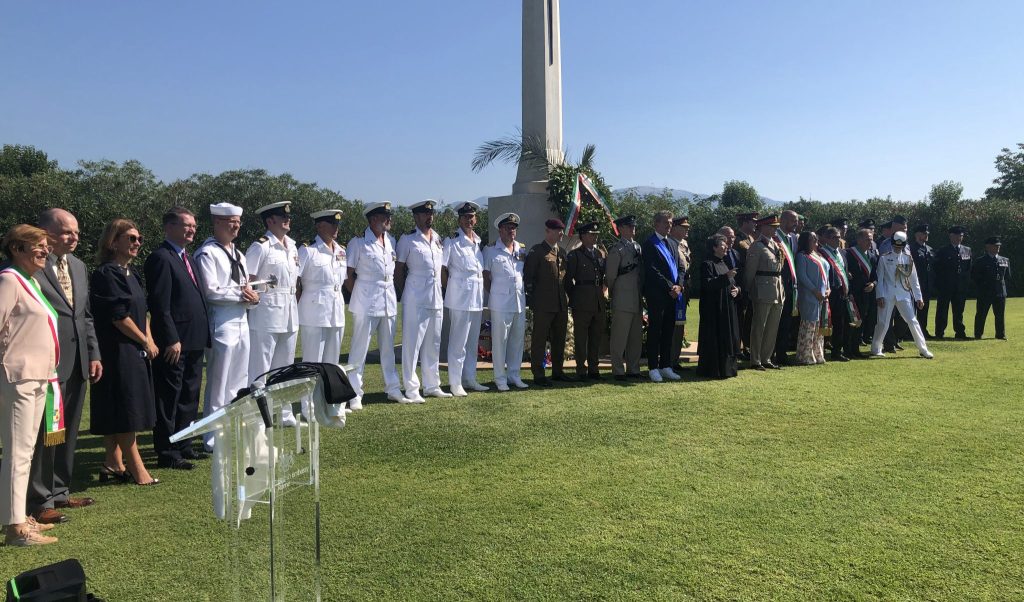
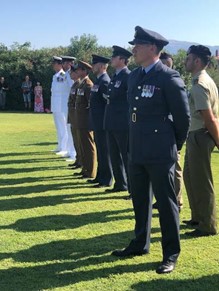
La “Collina della Memoria” a Montecorvino Rovella Situata a circa 1,8 km dal centro cittadino, è un luogo simbolico della liberazione durante l’Operazione Avalanche. La “Collina della Memoria” infatti rappresentava per i fanti americani l’ultima roccaforte tedesca da conquistare, per liberare il territorio definitivamente e continuare l’avanzata. Dopo aspri combattimenti, gli americani riuscirono a liberare la collina e costrinsero i nazisti a ripiegare verso le montagne a nord.
The “Hill of Remembrance” in Montecorvino Rovella, located about 1.8 km from the town center, is a symbolic site of liberation during Operation Avalanche. The “Hill of Memory” represented the last German stronghold to be conquered by the American infantry in order to definitively liberate the territory and continue the advance. After fierce fighting, the Americans managed to liberate the hill and forced the Nazis to retreat toward the mountains to the north
Per gentile concessione del Comune di Montecorvino Rovella
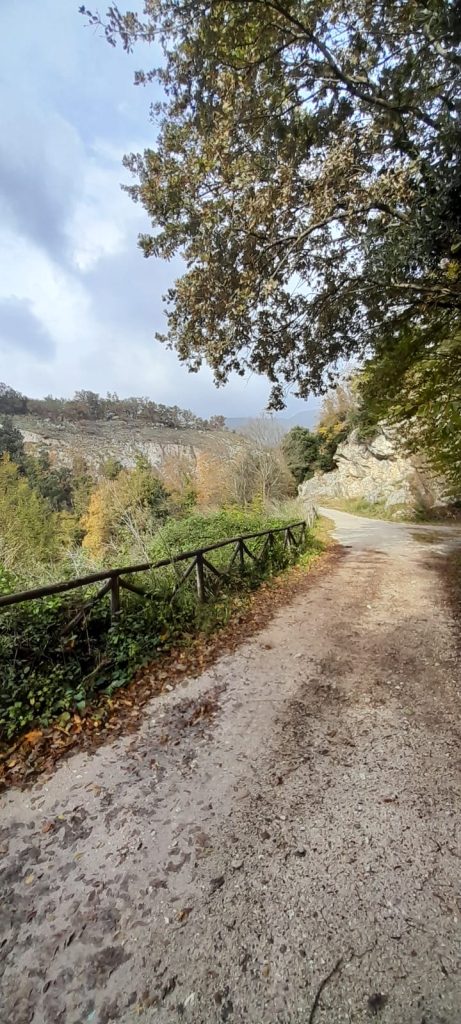
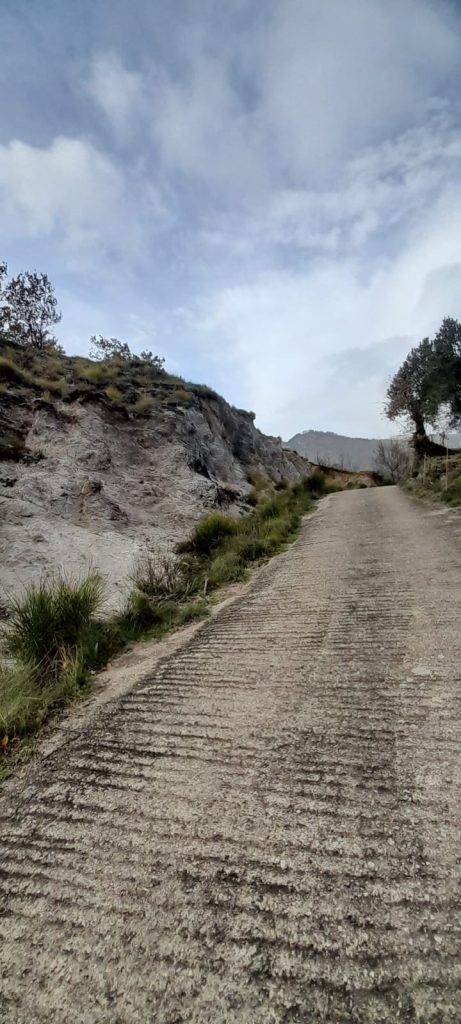
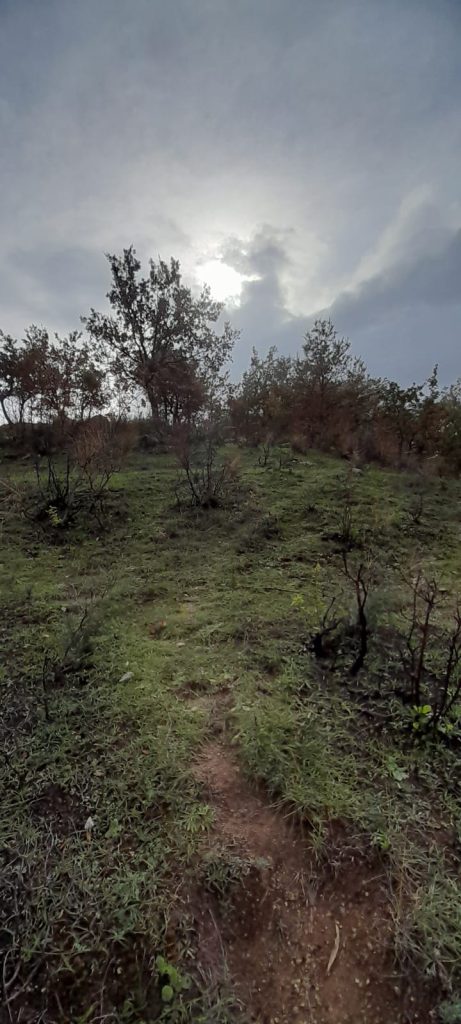
Il memoriale ricorda e onora i soldati del 30o Reggimento, Terza Divisione di Fanteria Americana che liberò Montecorvino Rovella dall’occupazione nazista il 21 settembre 1943. Il monumento è stato costruito in onore dei soldati della Terza Divisione di Fanteria.
Inaugurato nel 2021 alla presenza di dignitari militari italiani e americani, si trova nei giardini di piazza Sant’Eustachio, uno dei luoghi che ha visto il passaggio delle truppe americane per raggiungere i siti di battaglia. Ogni anno, nell’anniversario della liberazione, si tiene un evento per ricordare quegli uomini che con coraggio e estremo sacrificio hanno combattuto per la libertà. Il 21 settembre 2023, la cerimonia più importante si è tenuta presso il memoriale, dagli Stati Uniti è venuto il nipote del soldato Louis Cipriano, 30o Rgt, Terza divisione di fanteria, il sig. Louis Cipriano, accompagnato da familiari Lynn Frable Derk, pronipote del soldato, e suo marito Brian Derk.
The memorial remembers and honors the soldiers of the 30th Regiment, Third American Infantry Division who liberated Montecorvino Rovella from Nazi occupation on Sept. 21, 1943.
Inaugurated on 2021 in the presence of Italian and American military dignitaries, it is located in the gardens of Sant’Eustachio Square, one of the places that saw the passage of American troops to reach the battle sites. Every year, on the anniversary of the liberation, an event is held to remember those men who with courage and extreme sacrifice fought for freedom. On Sept. 21, 2023, the most important ceremony was held at the memorial, from the United States came the grandson of Private Louis Cipriano, 30th Rgt, Third infantry division, Mr. Louis Cipriano, accompanied by family members Lynn Frable Derk, great-granddaughter of the soldier, and her husband Brian Derk.
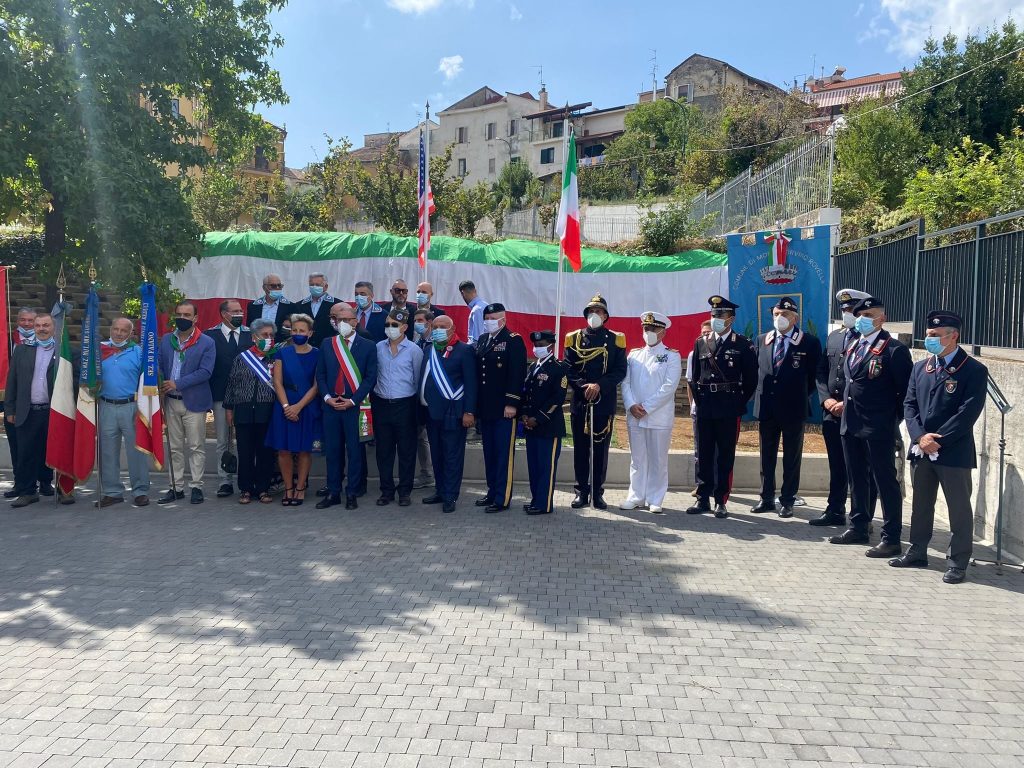
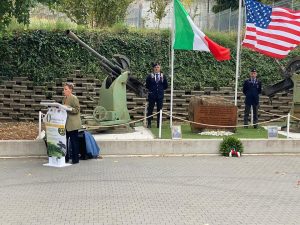
Il Montecorvino Airfield, oggi Costa d’Amalfi, fu un obiettivo strategico alleato per il trasporto di truppe e rifornimenti. Nella foto, ormai la pista è in mano alleata, militari australiani spostano un caccia italiano rimasto quasi indenne dopo i combattimenti.
Durante il conflitto, Bellizzi ospitò strutture militari cruciali, come le Casermette e la stazione ferroviaria, utilizzate per il trasporto di truppe e rifornimenti.
Montecorvino Airfield, now known as Costa d’Amalfi, was a key Allied strategic point for the transportation of troops and supplies. In the photo, the airstrip is now under Allied control, with Australian soldiers moving an Italian fighter aircraft that remained almost untouched after the battles.
During the conflict, Bellizzi hosted crucial military facilities, such as the Casermette and the railway station, which were used for the transportation of troops and supplies.
La Chiesa del Sacro Cuore a Bellizzi è arricchita da alcune opere del pittore Joseph Andreas Pausewang, artista e soldato della Wehrmacht in Italia.
The Church of the Sacred Heart in Bellizzi is enriched with several works by the painter Joseph Andreas Pausewang, an artist and soldier of the Wehrmacht in Italy.
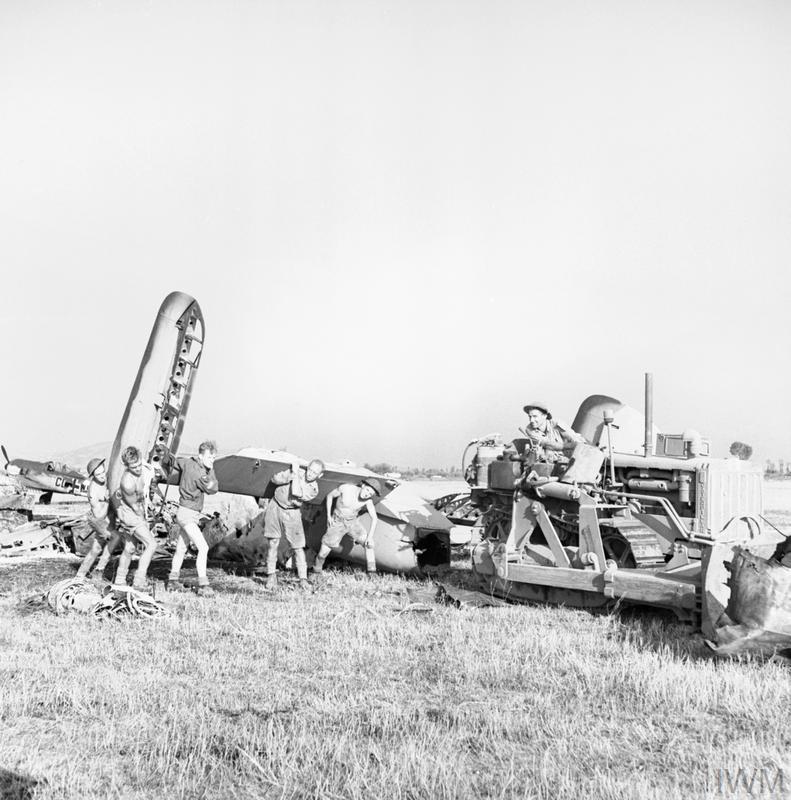
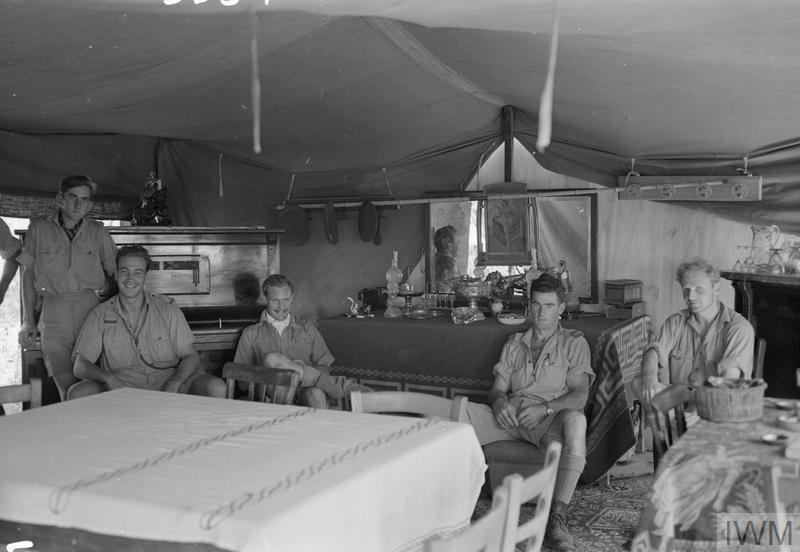
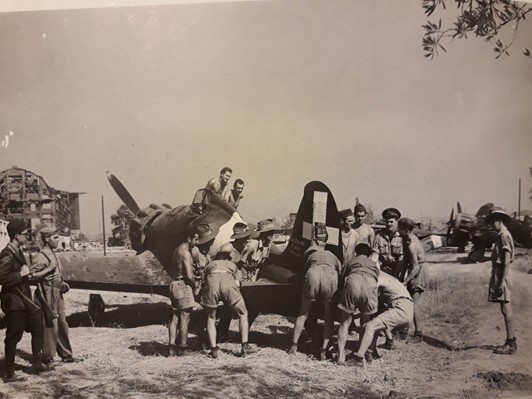
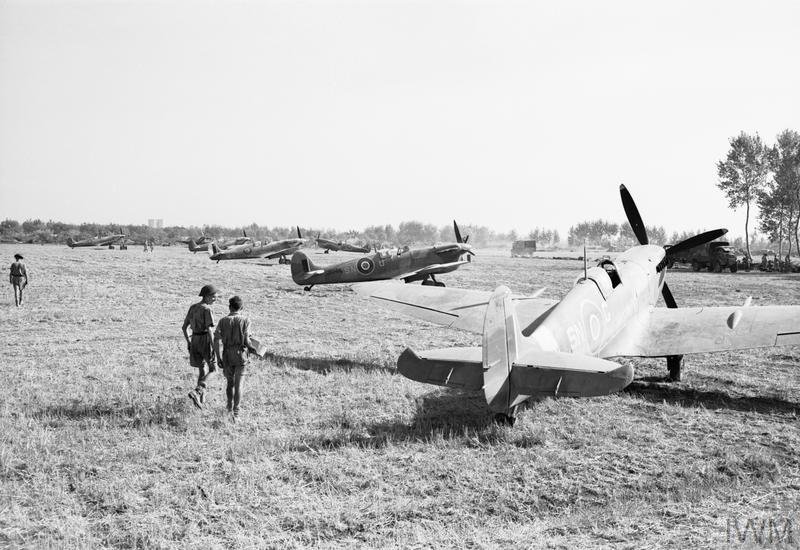
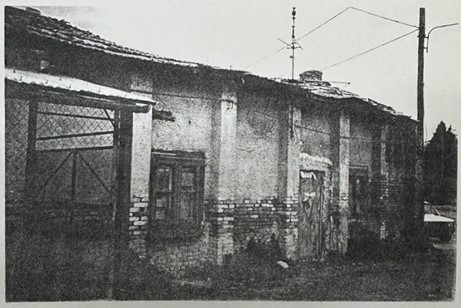

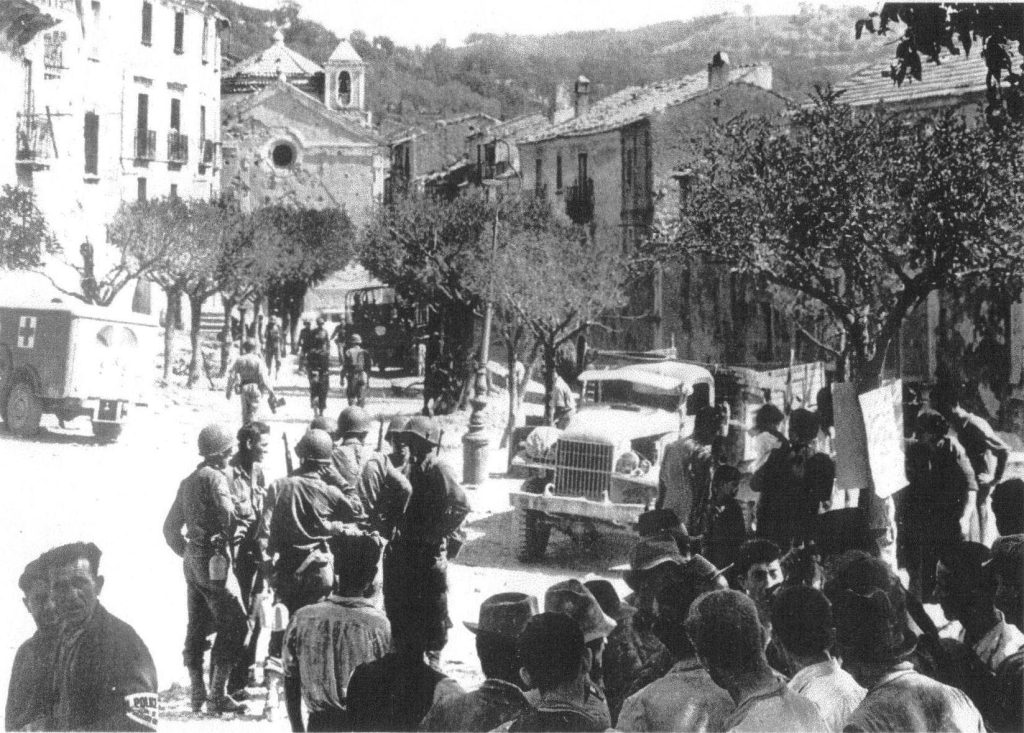
Altavilla Silentina, situata su un’altura che domina la piana del Sele, fu un punto strategico negli avvenimenti del settembre 1943. Dalla massima altura del territorio, “Quota 424”, la manovra nemica poteva essere controllata e ciò era fondamentale per le operazioni difensive delle truppe tedesche. Tra il 12 e il 14 settembre, la collina fu teatro di una feroce battaglia che si concluse con la conquista da parte degli Alleati.
I combattimenti corpo a corpo tra le truppe tedesche e quelle americane si protrassero fino all’esaurimento delle munizioni. Il 15 settembre la collina e il villaggio furono soggetti ad un bombardamento navale che causò molti danni alla popolazione già provata dai combattimenti dei giorni precedenti.
La cittadina subì gravi danni materiali e umani, ma la vittoria ad Altavilla permise agli Alleati di consolidare la testa di ponte e avanzare verso l’entroterra campano.
Altavilla Silentina, located on a hill overlooking the Sele plain, was a strategic point during the events of September 1943. From the highest elevation in the area, “Quota 424,” enemy movements could be monitored, which was crucial for the defensive operations of the German troops. Between September 12 and 14, the hill was the site of fierce fighting that ended with an Allied victory.
Hand-to-hand combat between German and American troops continued until ammunition was exhausted. On September 15, the hill and the village were subjected to a naval bombardment, causing significant damage to the population already weakened by the previous days’ fighting.
The town suffered severe material and human losses, but the victory at Altavilla allowed the Allies to consolidate their beachhead and advance into the Campanian hinterland.
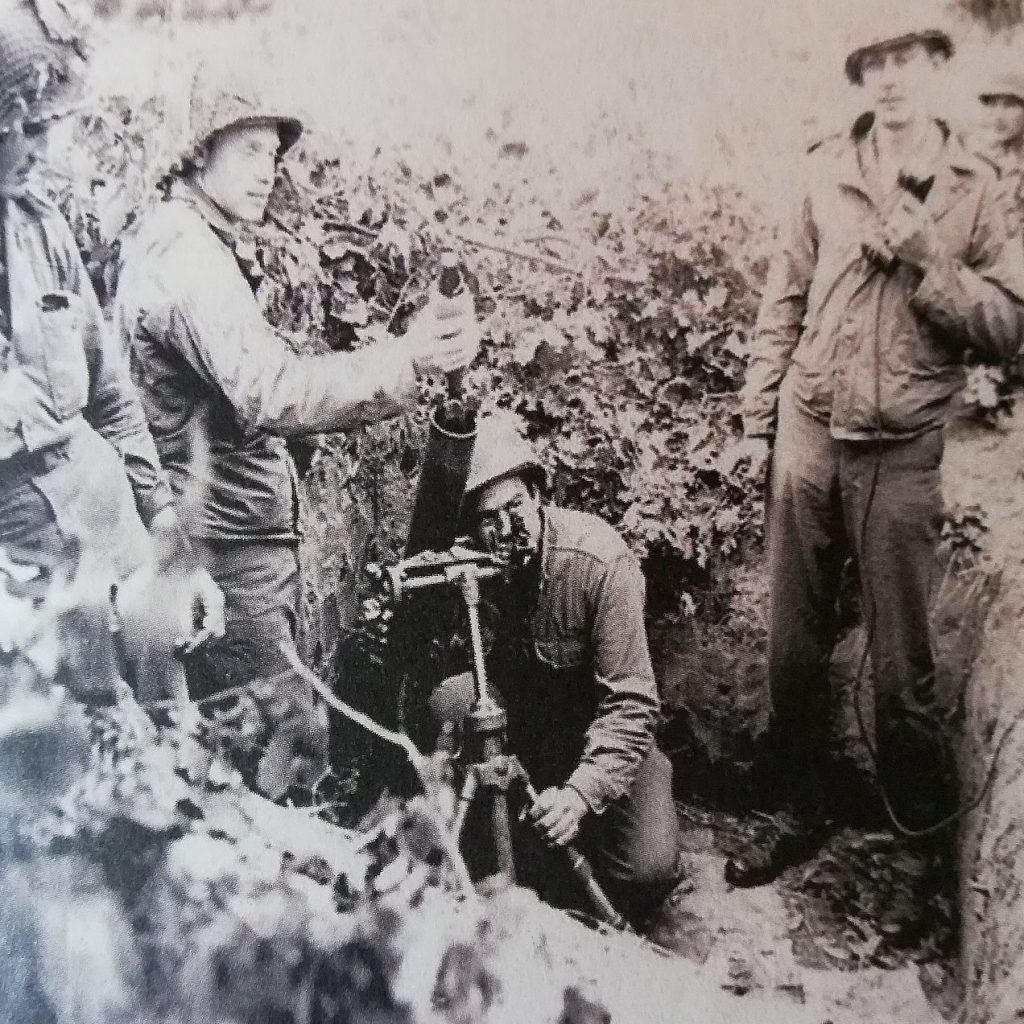
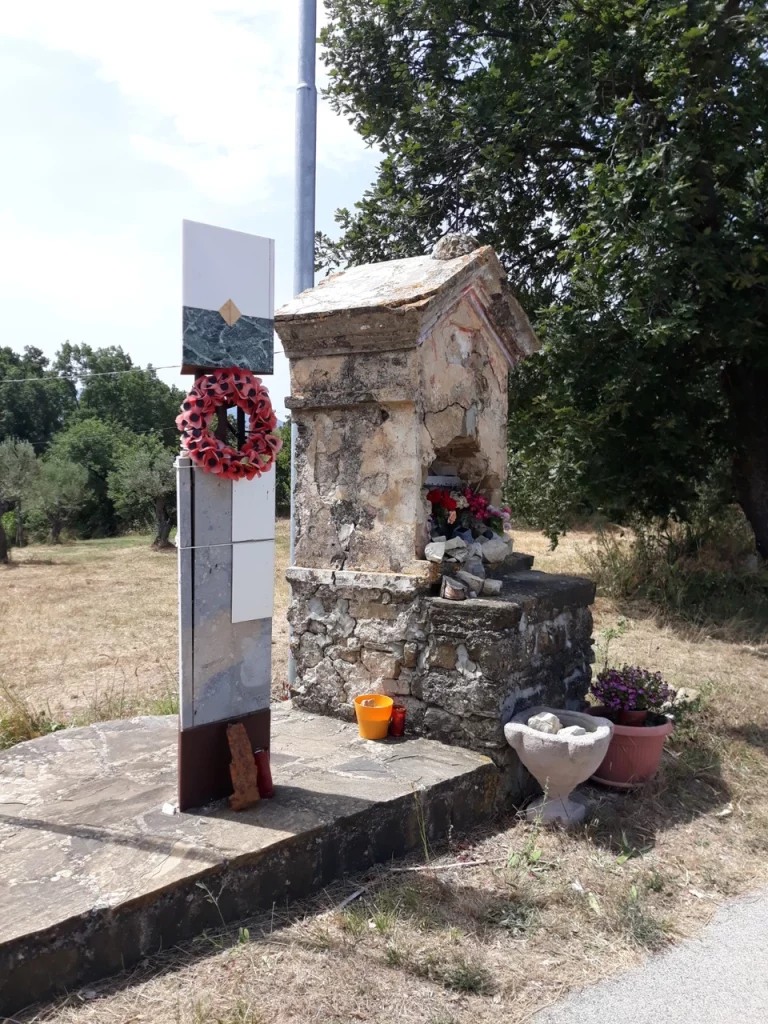
E’ stato uno dei luoghi epicentro delle operazioni dello sbarco ed in particolare il suo litorale è stato interessato dalla presenza di contingenti alleati che risalivano la costa per porre fine al regime nazi-fastisca.
Il sentiero prende il nome dal reggimento britannico che sbarcò nella zona durante l’Operazione Avalanche e che dovette affrontare un’ostinata resistenza da parte delle forze tedesche, che utilizzarono tattiche di guerriglia e posizioni fortificate per infliggere perdite significative agli alleati.
ENGLISH VERSION
It was one of the epicenters of the landing operations, and in particular, its coastline was affected by the presence of Allied contingents advancing along the coast to end the Nazi-fascist regime.
The trail is named after the British regiment that landed in the area during Operation Avalanche and had to face stubborn resistance from the German forces, who used guerrilla tactics and fortified positions to inflict significant losses on the Allies.
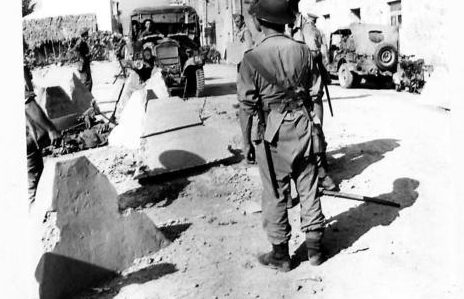
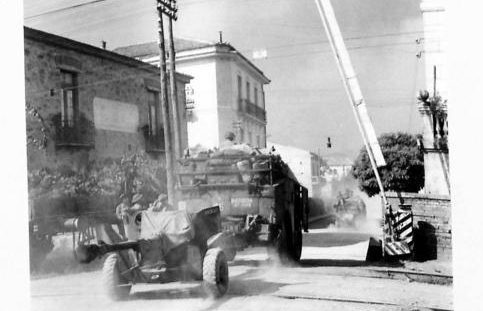
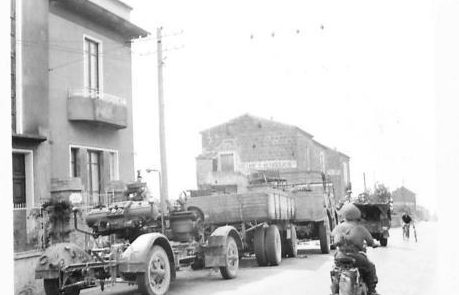
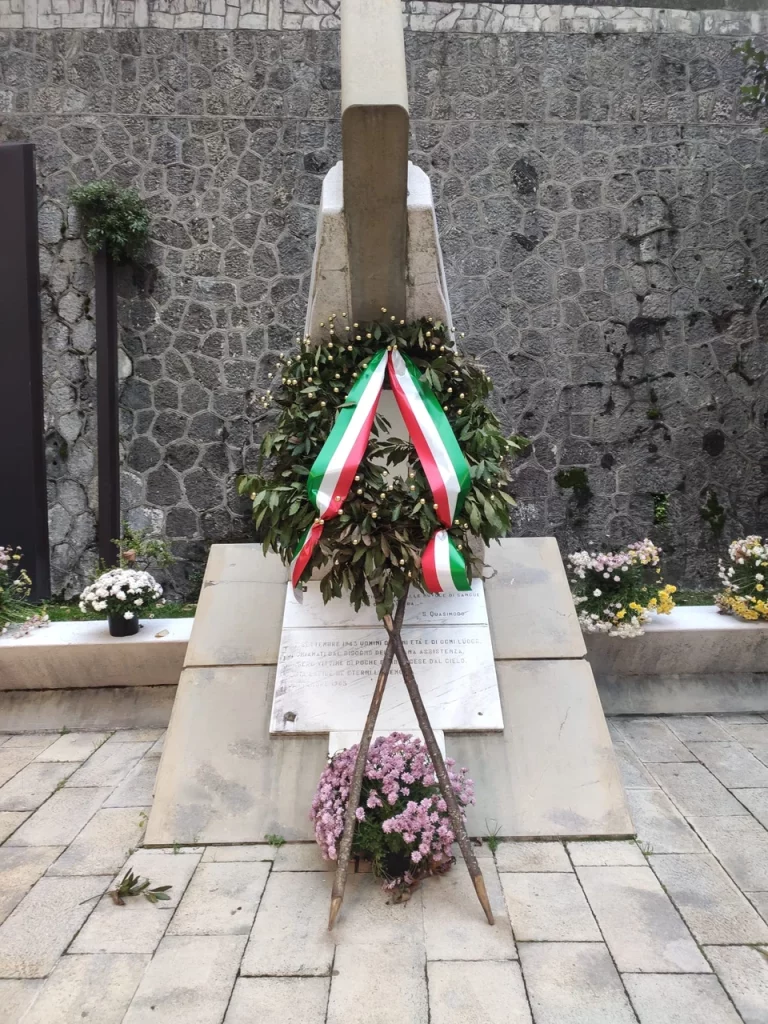
Il 17 settembre 1943, Campagna subì un tragico bombardamento alleato che colpì la piazza del Municipio, causando oltre 160 morti. Le bombe caddero sulla folla in fila per il pane e i soccorsi non furono tempestivi. Fu decisivo l’aiuto dei medici ebrei internati nel campo locale che si adoperarono per soccorrere i civili colpiti.
On September 17, 1943, Campagna suffered a tragic Allied bombing that struck the town’s main square, killing over 160 people. The bombs fell on a crowd waiting for bread, and the response was delayed. The decisive help came from Jewish doctors interned at the local camp, who worked tirelessly to assist the wounded civilians.
Il campo di concentramento di Campagna, attivo dal 1940 al 1943, fu istituito in due ex conventi (Concezione e San Bartolomeo). Gli internati, italiani e stranieri, vivevano in condizioni spartane ma beneficiavano di una certa libertà, grazie alla compiacenza delle autorità e al supporto della DELASEM, la vita comunitaria fu meno dura rispetto ad altri campi.
The Campagna concentration camp, active from 1940 to 1943, was established in two former convents (Concezione and San Bartolomeo). The internees, both Italian and foreign, lived in Spartan conditions but enjoyed some freedom. Thanks to the tolerance of the authorities and the support of DELASEM, community life was less harsh compared to other camps.
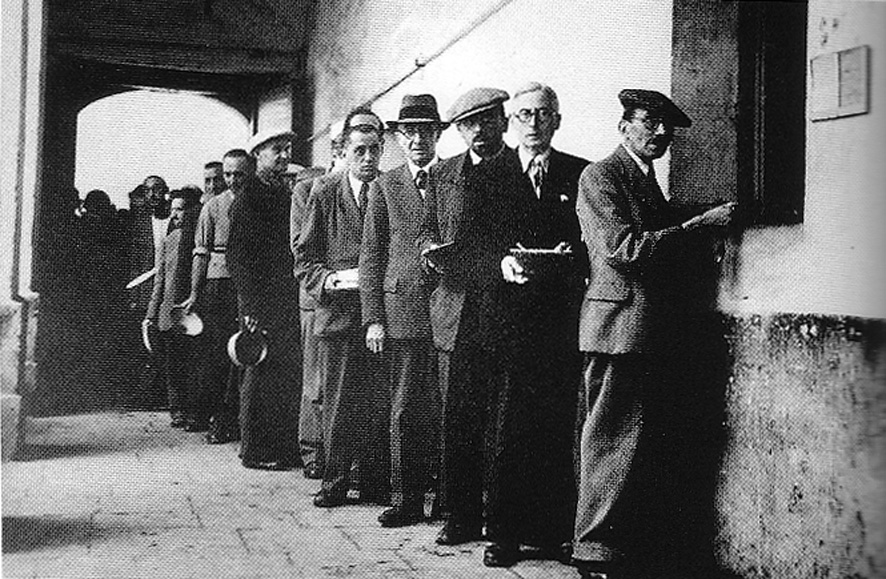
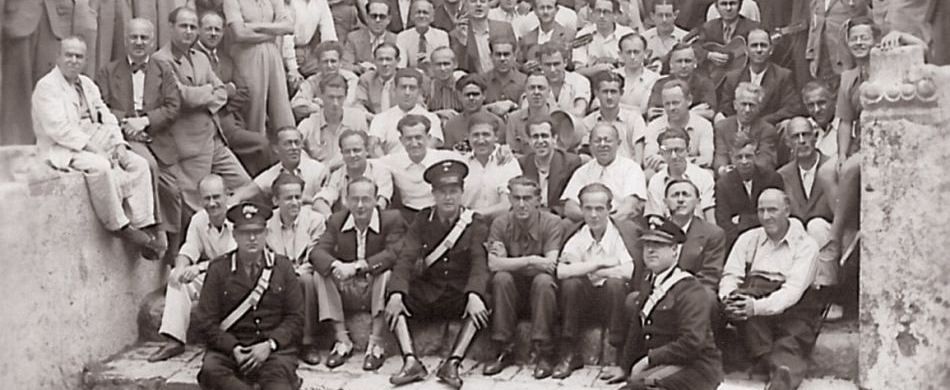
Oggi al suo posto sorge il Museo della Memoria e della Pace situato nell’ex convento di San Bartolomeo, racconta la storia degli ebrei internati, includendo testimonianze sulla Shoah e sulla vita di Giovanni e Giuseppe Palatucci. Il percorso museale comprende sale emozionali, esposizioni fotografiche, e stanze tematiche come la Camerata e la Sinagoga, che ricostruiscono la vita quotidiana degli internati.
Today, the Museum of Memory and Peace stands in its place, located in the former convent of San Bartolomeo. It narrates the story of the interned Jews, including testimonies about the Holocaust and the lives of Giovanni and Giuseppe Palatucci. The museum’s journey features emotional rooms, photographic exhibitions, and themed spaces like the Dormitory and Synagogue, which reconstruct the daily lives of the internees.
